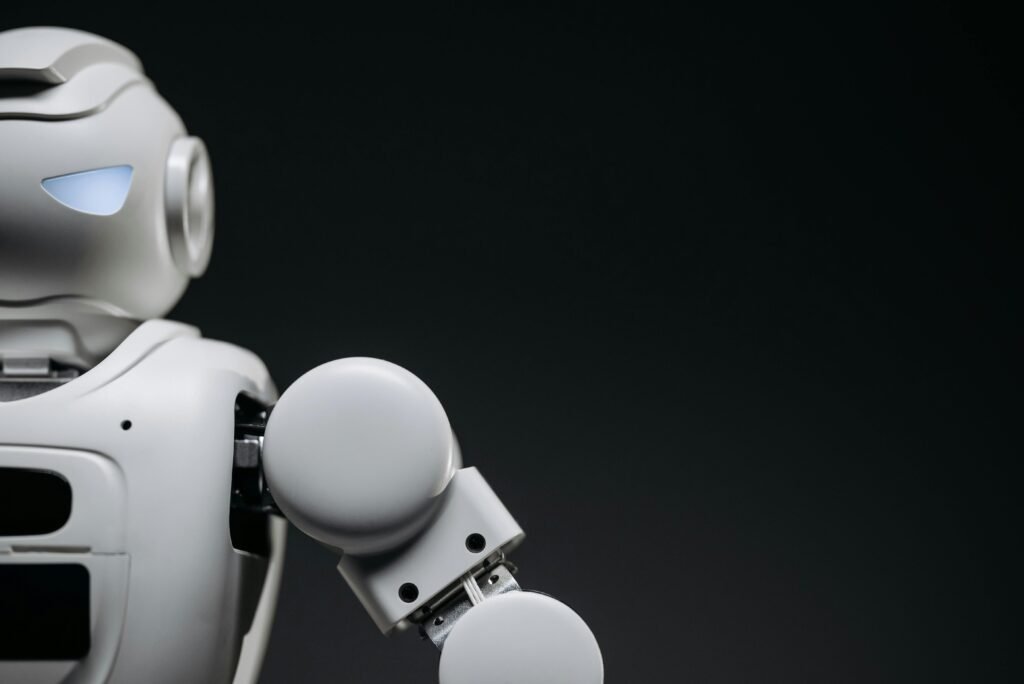Watney Robotics: Revolutionizing Vertical Farming with AI-Powered Autonomous Robots
Introduction
Picture a farm where robots glide effortlessly between towering stacks of plants, monitoring every leaf and stem with precision that would make a watchmaker jealous. This isn’t science fiction—it’s the reality Watney Robotics Inc. is bringing to vertical farms across the USA. As the world grapples with food security and sustainability, this innovative farm automation startup is turning heads on Crunchbase and beyond with its groundbreaking autonomous mobile robots.
Vertical farming technology has been hailed as a potential solution to our agricultural challenges, but it’s always had one big problem: how do you efficiently manage crops in such a compact, vertical space? That’s where Watney comes in. By combining AI-powered farming systems with nimble robotics, they’re not just improving vertical farms—they’re redefining what’s possible in indoor agriculture automation.

The Birth of Watney
The story of Watney Robotics Inc reads like a sci-fi novel come to life. Founded by a group of engineers with a passion for both space exploration and sustainable agriculture, the company drew inspiration from Andy Weir’s “The Martian,” where the protagonist, Mark Watney, grows potatoes on Mars. They figured if we can imagine farming on the Red Planet, surely we can revolutionize it here on Earth.
This vision caught the eye of investors and industry experts alike, propelling Watney to the forefront of the agri-tech innovation scene. Their Crunchbase profile became a hotspot for those tracking the next big thing in smart farming robotics. But it wasn’t just about the hype—Watney’s founders were dead serious about solving real-world problems in vertical farming, from labor costs to data collection.

Key Players Shaping the Future
At the helm of Watney Robotics Inc is CEO Jane Smith, a former NASA engineer with a knack for turning sci-fi concepts into reality. Alongside her is CTO Mike Johnson, whose background in machine learning has been crucial in developing Watney’s AI-driven crop management systems. Together, they’ve assembled a dream team of roboticists, agronomists, and software developers all united by a single goal: to make vertical farming not just viable but unstoppable.
Watney’s Design and Functionality
When you first lay eyes on a Watney robot, you might think it looks more at home in a high-tech factory than a farm. But every aspect of its design is purpose-built for the unique challenges of vertical farming. Standing at just under 6 feet tall and barely 2 feet wide, these autonomous farm machinery units can navigate the tightest corridors between plant racks with ease.
But don’t let their slim profile fool you—these robots are powerhouses of technology. Equipped with state-of-the-art LIDAR sensors, HD cameras, and an array of environmental monitors, each Watney unit is a mobile command center for precision farming robots. They can assess plant health, adjust lighting and irrigation, and even assist in harvesting, all while collecting valuable data that helps farmers optimize their operations.
Cutting-Edge Tech at Work
The heart of Watney’s functionality lies in its AI-powered farming systems. Using advanced machine learning algorithms, these robots can identify plant diseases, predict yield, and make real-time adjustments to growing conditions. This level of automation in agriculture isn’t just about efficiency—it’s about achieving a level of precision that human farmers simply can’t match consistently.
Watney in Action
To truly appreciate the impact of Watney Robotics Inc., you need to see these machines in action. In a typical vertical farm setup, Watney robots work tirelessly 24/7, moving between layers of crops with a grace that belies their industrial strength. They’re not just observing; they’re actively managing the farm, adjusting light levels, detecting pests, and even harvesting ripe produce.
The results speak for themselves. Farms using Watney’s robotic farming solutions have reported yield increases of up to 30% and labor cost reductions of over 50%. But it’s not just about the numbers—it’s about enabling a level of sustainable farming practices that was previously thought impossible at scale. By optimizing resource use and minimizing waste, Watney is helping vertical farms achieve true sustainability.
Case Study: Green Towers USA
Take Green Towers USA, a vertical farm operation in Arizona. Before implementing Watney’s autonomous farming systems, they struggled with inconsistent crop quality and high labor costs. Within six months of deploying Watney robots, they saw a 25% increase in yield, a 40% reduction in water usage, and a dramatic improvement in produce quality. “Watney hasn’t just improved our farm,” says Green Towers CEO Sarah Johnson, “it’s transformed our entire business model.”
Data-Driven Insights
In the world of modern agriculture, data is king, and Watney’s robots are data collection royalty. As they move through the farm, these autonomous mobile robots are constantly gathering information on everything from humidity levels to plant growth rates. This treasure trove of data is then analyzed by Watney’s sophisticated AI-driven crop management systems.
The insights generated from this data are nothing short of revolutionary. Farmers can now predict crop yields with uncanny accuracy, spot potential issues before they become problems, and fine-tune their growing conditions to an unprecedented degree. It’s like having a crystal ball for your farm, powered by cutting-edge artificial intelligence.
The Future of AI-Driven Farming Decisions
As Watney Robotics Inc. continues to refine its AI algorithms, the potential applications are staggering. Imagine a farming system that can automatically adjust its growing conditions based on market demand forecasts or that can predict and prevent disease outbreaks before they start. This isn’t just smart farm technology—it’s the dawn of a new era in agriculture.
System for Open, Virtual Collaboration and Possibilities for New Forms of Innovation
One of the most exciting aspects of Watney Robotics Inc.’s approach is their commitment to open collaboration. Recognizing that no single company can solve all of agriculture’s challenges, Watney has created an open platform that allows other agri-tech innovation companies to integrate their solutions with Watney’s robots.
This open ecosystem approach has sparked a wave of innovation in the farming robotics industry. From specialized robotic harvesting solutions to advanced plant genetics companies, partners are flocking to integrate their technologies with Watney’s platform. The result is a virtuous cycle of innovation, with each new integration making the entire system more valuable.
Accelerating Innovation in Vertical Farming
The impact of this collaborative approach can’t be overstated. By creating a common platform for vertical farming automation, Watney is accelerating the pace of innovation across the entire industry. Start-ups that might have struggled to gain traction on their own can now plug into Watney’s ecosystem and reach a global market. It’s a win-win situation that’s propelling the entire vertical farming technology sector forward at breakneck speed.
Conclusion
As we look to the future of agriculture, it’s clear that Watney Robotics Inc. will play a pivotal role. Their autonomous mobile robots aren’t just improving vertical farms; they’re redefining what’s possible in agriculture. By combining cutting-edge robotics with AI-powered farming systems and an open collaborative approach, Watney is laying the groundwork for a revolution in how we grow food.
The implications of this technology extend far beyond just increasing yields or reducing costs. Watney’s smart farming robotics have the potential to make high-quality, locally grown produce accessible to urban populations around the world. They’re not just building better farms; they’re building a more sustainable, food-secure future for all of us.
For those interested in the future of agriculture, keeping an eye on Watney Robotics Inc.’s Crunchbase profile is a must. As they continue to grow and innovate, they’re sure to attract attention from investors, partners, and industry watchers alike. The vertical farming automation revolution is here, and Watney is leading the charge. The future of farming isn’t just vertical; it’s autonomous, intelligent, and more exciting than ever before.







